
Key Points
Financials are more than just banks; Insurance is making a relative turn. Breadth metrics have weakened slightly in the near-term but remain supportive of a bullish equity trend. We add Small Cap breadth metrics to the note this week and they paint the same picture as Large Cap and NYSE breadth.
Chart in Focus:
The S&P 500 Insurance Index traded to a new high yesterday and remains well above the rising 50-day moving average. While the absolute trend is impressive, the relative performance is what has caught our attention today. The Insurance Index has been making a slow turn higher relative to the S&P 500 since November. The ratio is above the rising 50-day moving average and traded to a 21-day high yesterday. While the banks get much of the attention in the Financial Sector, the relative turn in Insurance is worth noting.
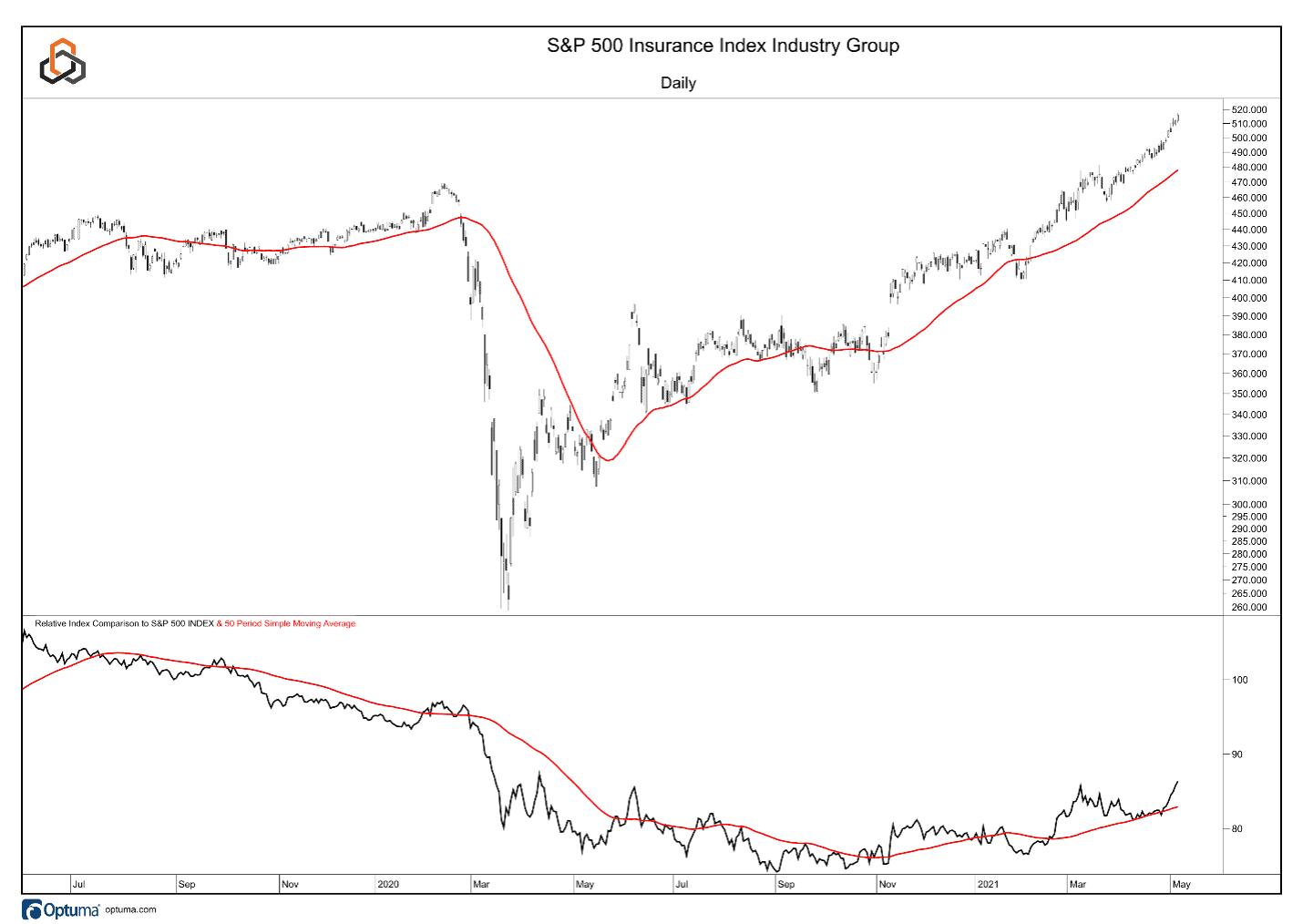
S&P 500 Breadth
The Advance / Decline Line for the S&P 500 continues its relentless climb higher, confirming the trend in the index as both traded to new highs last week.
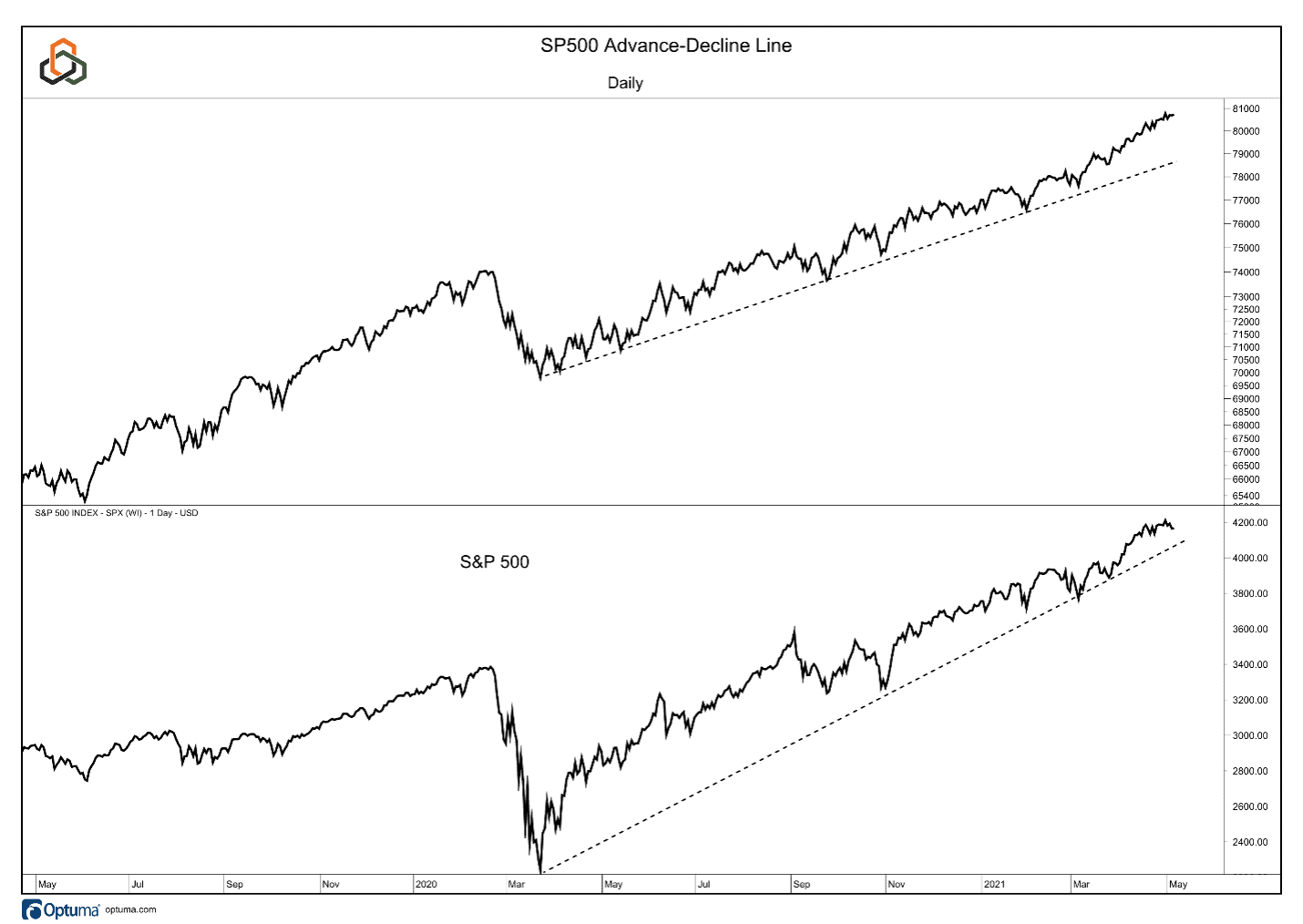
At the same time, there is also confirmation from a volume perspective. The S&P 500 Advancing – Declining Volume Line is trading near record levels and remains above the steadily rising 50-day moving average.
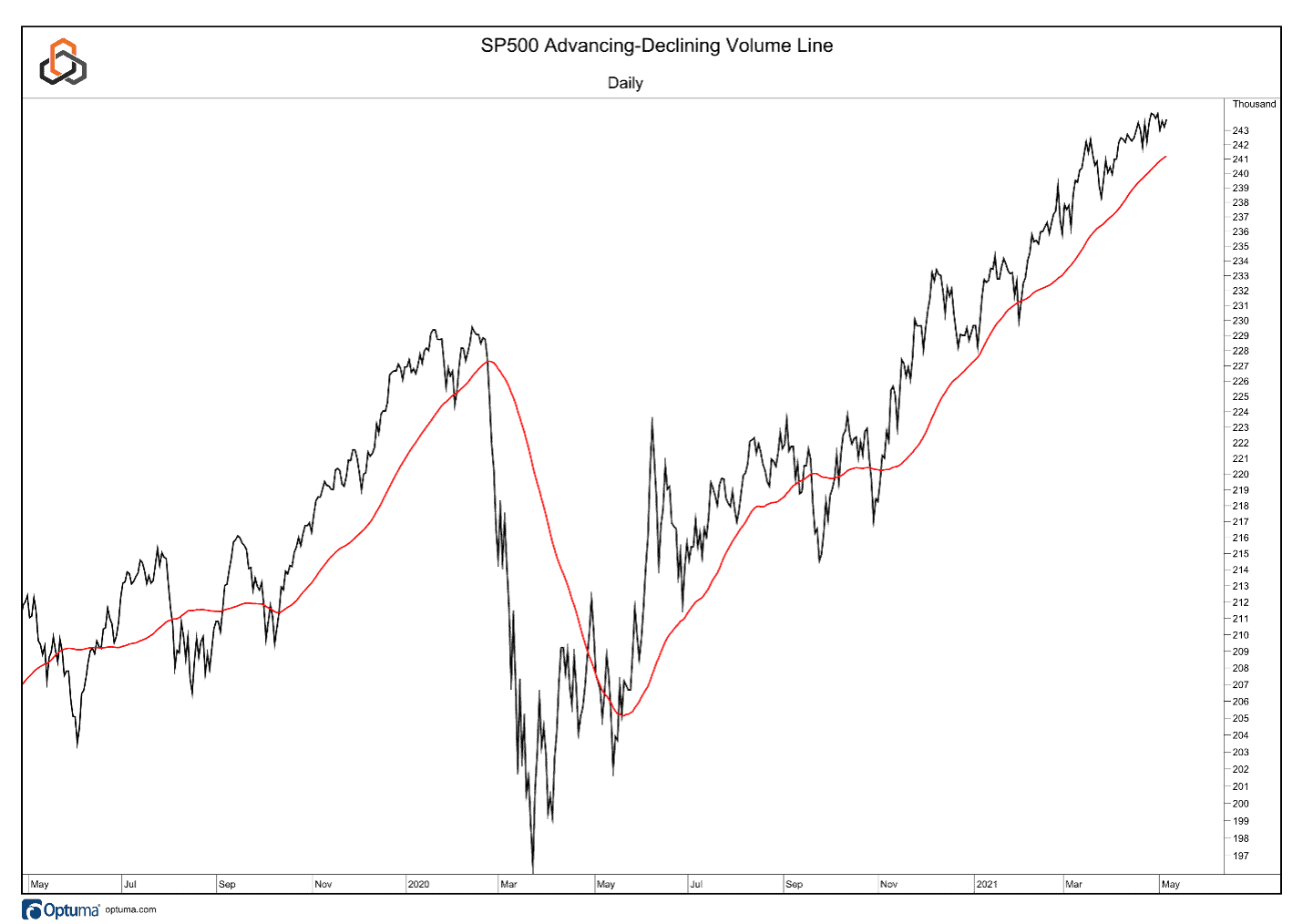
The percentage of stocks in the S&P 500 which are trading above their respective 200-day moving averages is currently 93.07%, down from 94.46% last week. Since January 2011, when the percentage is greater than 90% and the S&P 500 is above its 200-day moving average, the index is higher 21 days later (one month of trading) 59.81% of the time for a median return of 0.65%. N = 128.
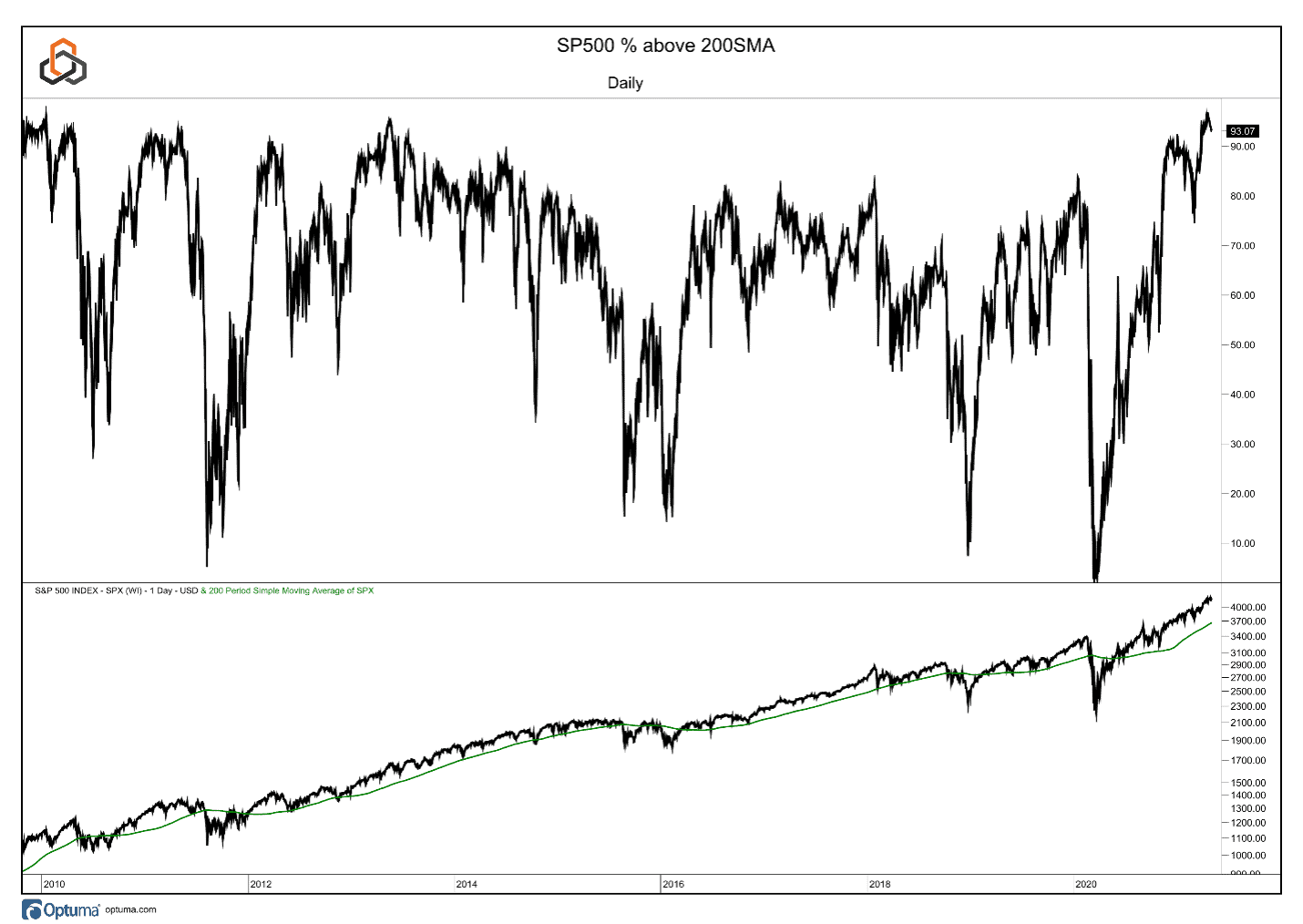
Looking at the percentage of stocks in the index trading above their respective 50-day moving averages, we can see the reading is 79.41%, down from 87.72% last week. Since September 2010, when this metric crosses below 80% and the index is above its 50-day moving average, the S&P 500 is higher, one month later, 64.10% of the time with a median return of 1.27%. N = 80.
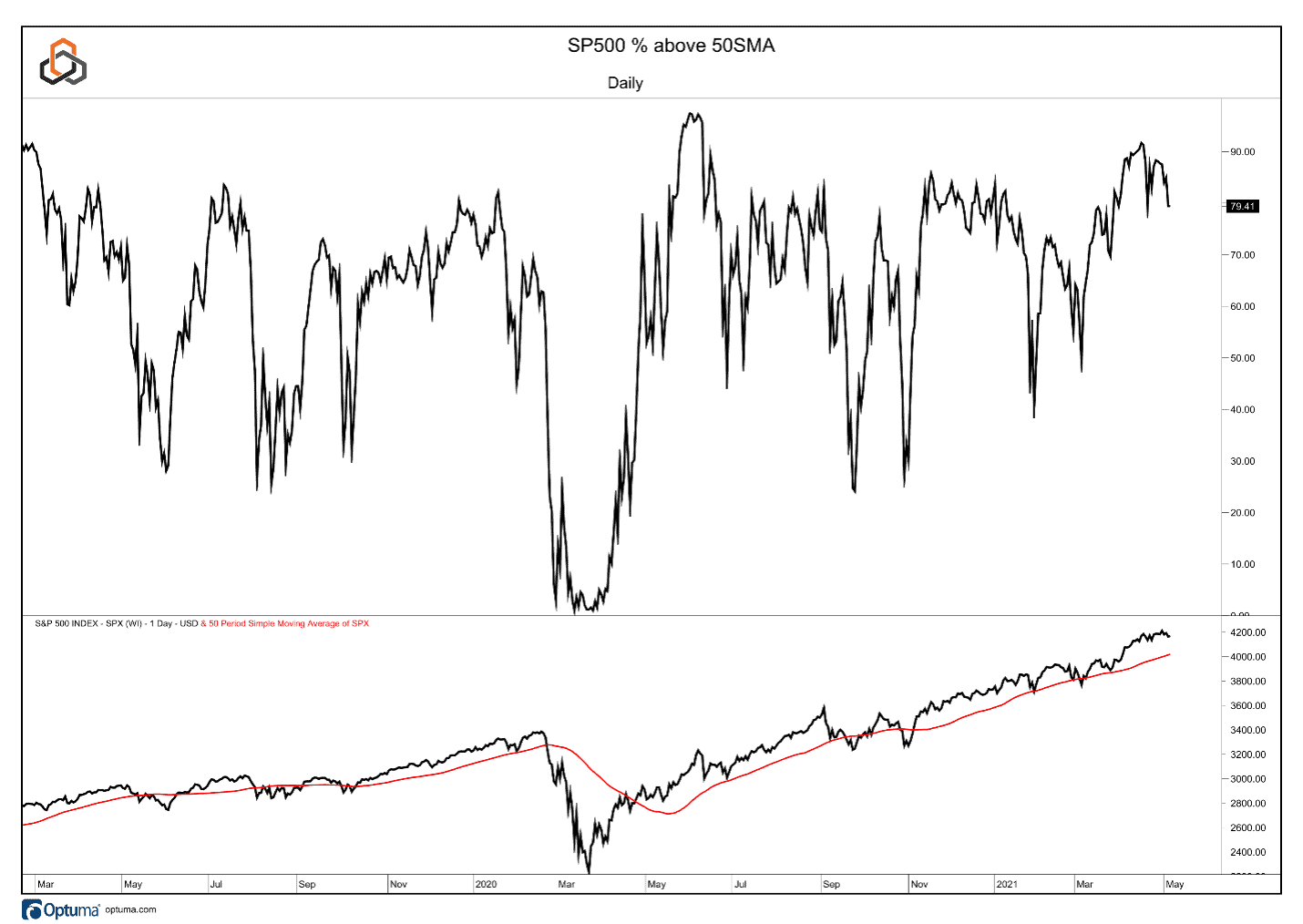
For the percentage of stocks that are above their 20-day moving averages, the metric is currently 63.17% down from 72.67% last week. Since October 2010, when this metric crosses below 70% and the index is above its 20-day moving average, the S&P 500 is higher, 21 days later, 70.63% of the time for a median gain of 1.80%. N = 147.
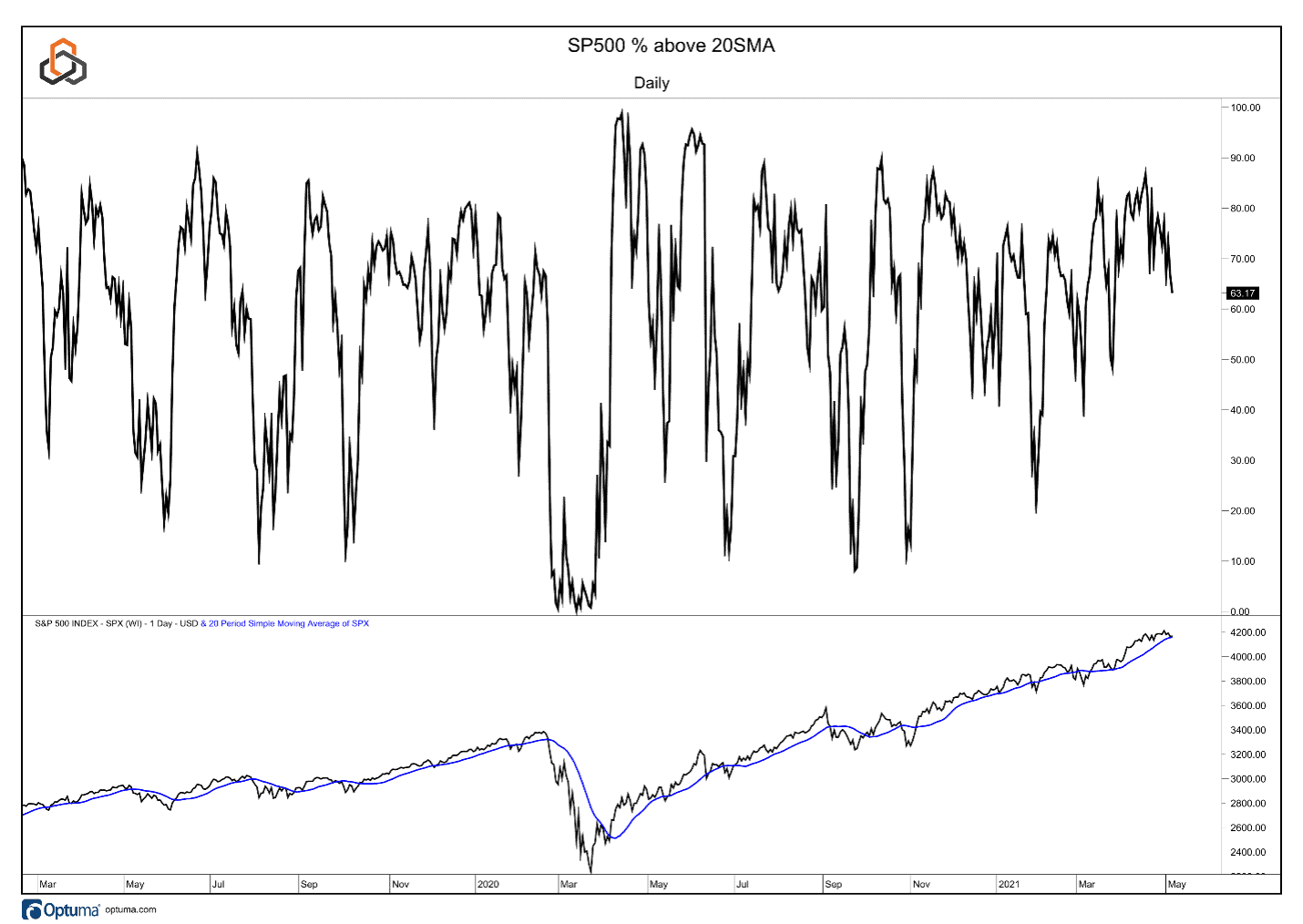
While the metrics above discuss participation in the bullish equity trend, we are also interested in the leadership dynamics. Looking at the index on an equally weighted basis, we can neutralize the outsized influence of the Mega Cap names. The relative performance of the Equal Weight S&P 500 compared to the Cap Weight S&P 500 shows us that Equal Weight has been in the leadership role since last summer, and has traded into an important resistance zone which has proven tough to overcome.
After a short pullback, Equal Weight is beginning to outperform again. A break above resistance would send an important message that leadership in the bull market is not just concentrated in a handful of the biggest names. These views are unchanged from last week.
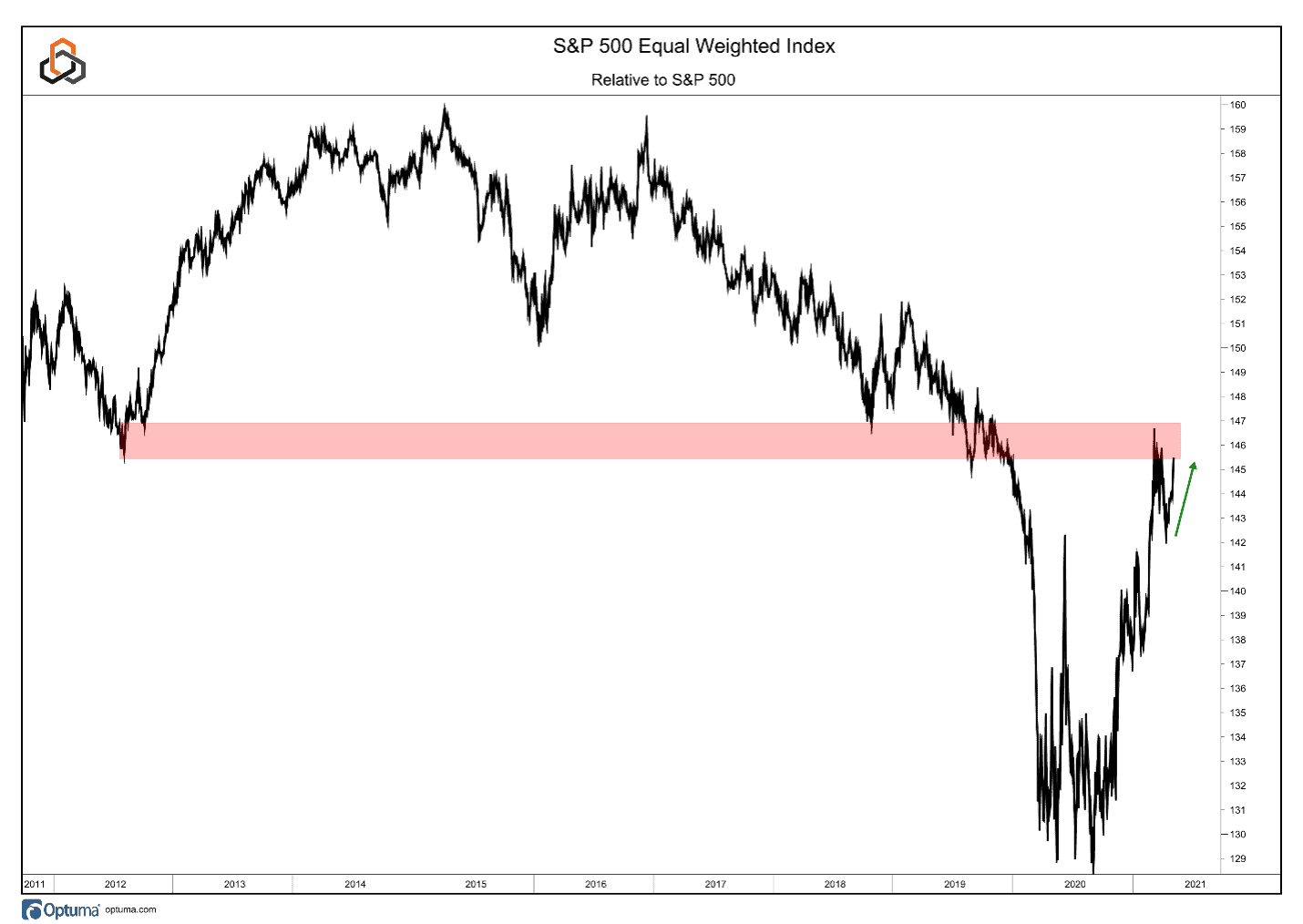
NYSE Breadth
New York Stock Exchange Breadth remains healthy, if not quite as strong as what is being seen in the S&P 500. The NYSE Advance/Decline Line continues to trend higher. The percentage of stocks above their 20-day moving averages has been making lower highs and has slipped below the 60% mark. Both the percentage of stocks above their respective 50 and 200-day moving average remain above 60%.
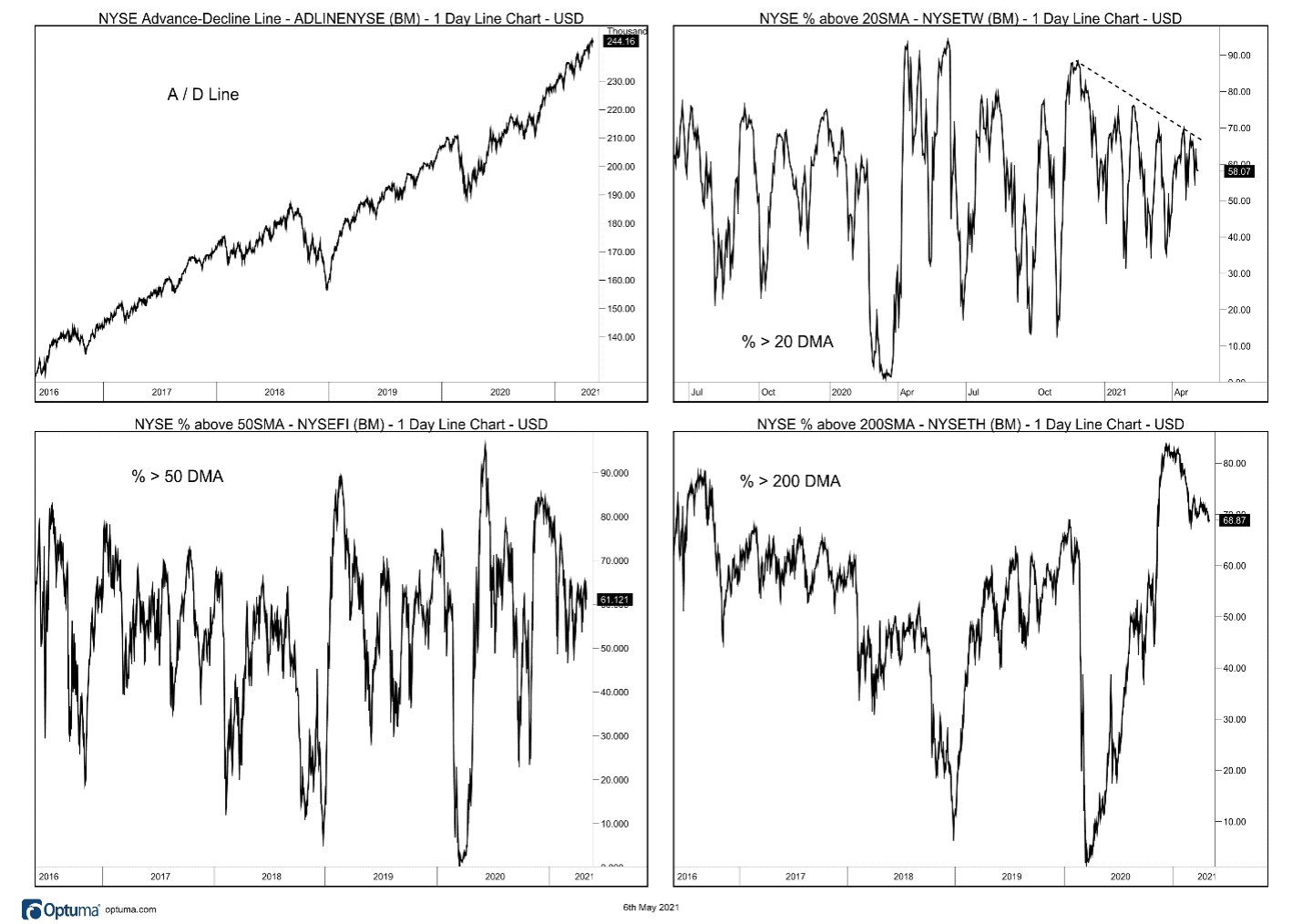
Small Cap Breadth
In a new addition to this week’s note, we look at the key breadth metrics for the S&P 600. As with the other averages, the Advance/Decline Line is in a steady uptrend. The percentage of stocks trading above their respective 20, 50 and 200-day moving averages are all greater than 60%. The standout in the group is the percentage above their 200-day moving average, at 88.87%.
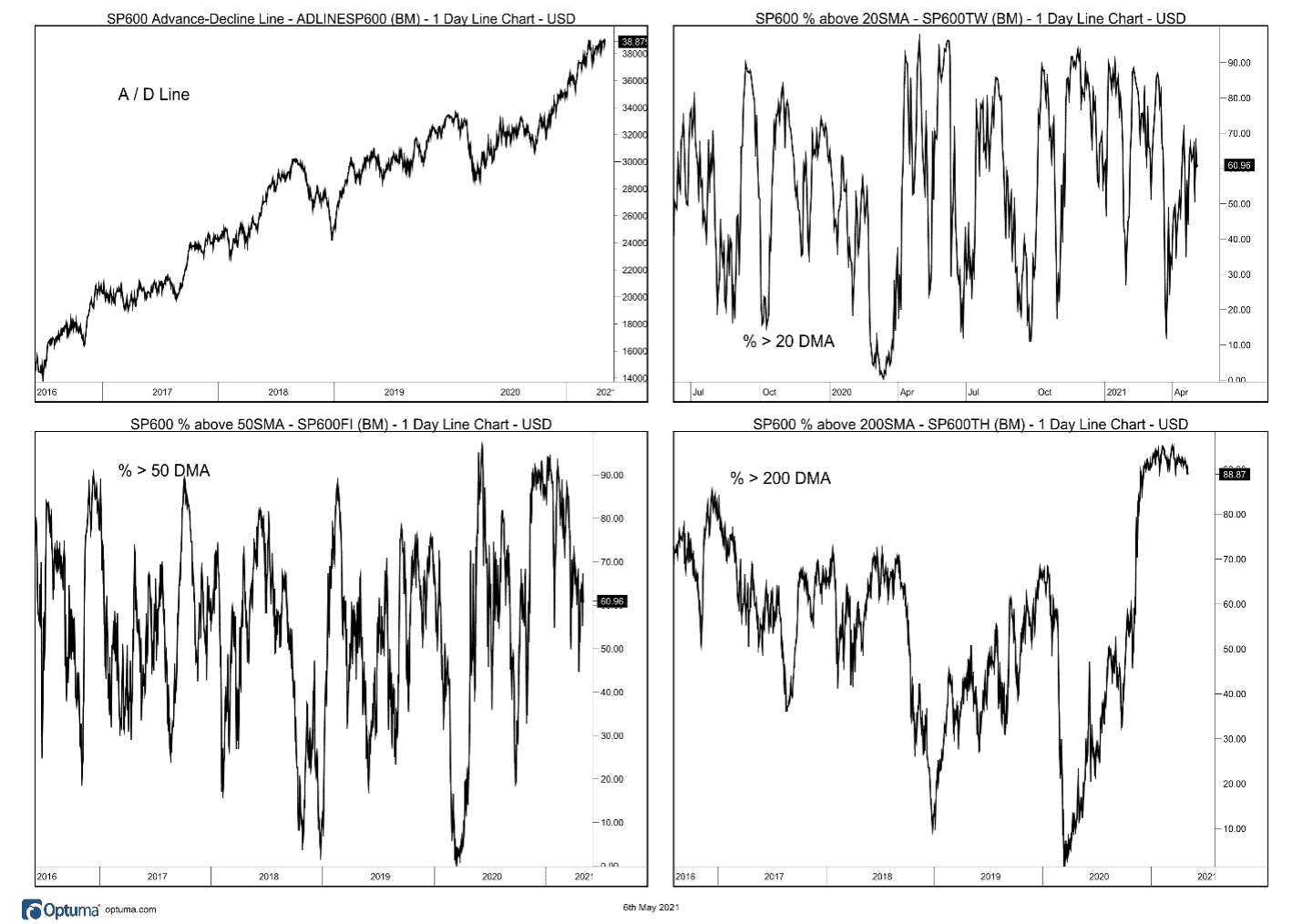
Take-Aways
Breadth metrics for the S&P 500, NYSE and S&P 600 remain supportive of the bullish equity trends that we have been highlighting. We are not blind to the slight weakening in the near-term, but they have yet to break levels that would cause us to alter our view.
